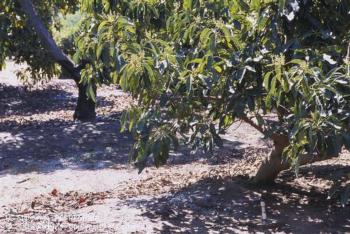Unused stories
Gardening Tips - Irrigating your fruit trees in the summer

Fruit and nut trees will grow well if irrigated regularly. Drought stress will reduce fruit size and stunt growth especially in young trees. If the water status of the plant is severely deficient the leaves will wilt, curl, and sunburn. The fruit can be dramatically affected, too, through reduction in size, water loss and shrivel, and sunburn.
Good irrigation practices in California include the application of water at sufficient intervals in order to never induce significant plant stress. This will ensure the maximum plant growth, fruit size, and yield. In some circumstances, however, a slight water stress induced at specific growth stages can improve fruit flavor, enhance sugar or oil content, and limit vegetative growth.
Water quality may be an issue in parts of California with salt or mineral excess problems. Irrigation water should be tested for its mineral content to avoid toxicity to plants if there is a problem expected.
More trees are lost to over-irrigating than probably to any other cause. Over-irrigation combined with poor drainage especially leads to tree death. For the period after leaf drop in the fall and until shoot and leaf growth get underway in the spring, trees normally will not need irrigation.
Irrigation recommendations are often stated in the following ways: “irrigate when needed,” “irrigate thoroughly, but not frequently.” The meaning of these statements are unclear for many, especially the novice and those with the tendency to irrigate more when plants appear unhealthy. The key to irrigating any plant is “how much” and “how often.”
For more details on the how to, and how much, check out the website at http://homeorchard.ucdavis.edu/The_Big_Picture/Irrigation/
This article is courtesy of UC California Backyard Orchard website
